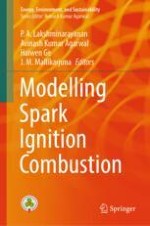2024 | OriginalPaper | Buchkapitel
14. Gasoline Engine Boosting Systems
verfasst von : Pohorelsky, Ludek, Vankayala, Sujeet Nagaraj, Kiran Pithamber, Shajeev Surendran, Vondrak, Adam, Ashish Deshmukh
Erschienen in: Modelling Spark Ignition Combustion
Verlag: Springer Nature Singapore
Aktivieren Sie unsere intelligente Suche, um passende Fachinhalte oder Patente zu finden.
Wählen Sie Textabschnitte aus um mit Künstlicher Intelligenz passenden Patente zu finden. powered by
Markieren Sie Textabschnitte, um KI-gestützt weitere passende Inhalte zu finden. powered by
